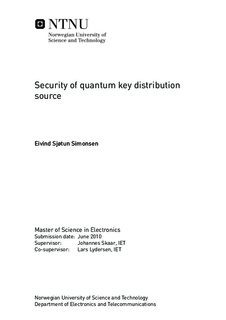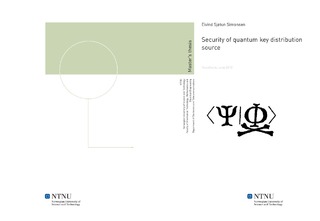| dc.description.abstract | Cryptography has begun its journey into the field of quantum information theory. Classical cryptography has shown weaknesses, which may be exploited in the future, either by development in mathematics, or by quantum computers. Quantum key distribution (QKD) is a promising path for cryptography to enable secure communication in the future. Although the theory of QKD promises absolute security, the reality is that current quantum crypto systems have flaws in them, as perfect devices have proven impossible to build. However, this can be taken into account in security proofs to ensure security, even with flaws. Security loopholes in QKD systems are being discovered as development progresses. Nevertheless, the system being built at NTNU is intended to address them all, creating a totally secure system. During this thesis, work was continued assembling the interferometer which is the basis for encoding qubits. It was fully connected on an optical table, and interference was obtained. Concerning theoretical work, calculations for a photon source specific parameter was carried out. It consisted of expanding previous framework and applying the results in both an established security proof, and a recent generalization of this proof. Two source effects were in focus, the lasers random phase and its fluctuating pulse intensity. Where analytical derivation was no longer possible, Matlab was used for numerical calculations. Under the conditions of the framework and proofs this thesis lies on, randomized phase turned out to have a negligible improvement over the case of non-random phase. Fluctuating amplitude showed a larger effect, reducing system performance. The input parameters were extreme, thus in a realistic situation it should not affect system performance significantly. However, these fluctuations must be taken into account when proving system security. | nb_NO |

